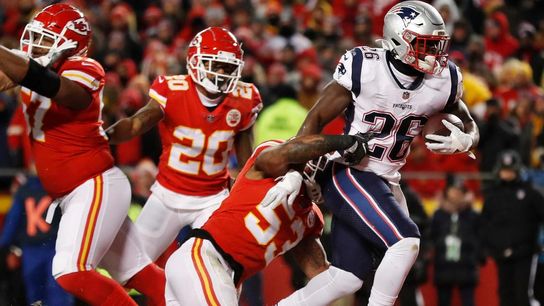From the moment Rex Burkhead crossed the Arrowhead Stadium goal line and sent the New England Patriots to yet another Super Bowl, much of the conversation in Football World has been about the ills of the NFL's overtime system. And to be clear, there's a lot to be desired from an entertainment aspect when the AFC Championship ends without the league MVP -- that being Kansas City Chiefs quarterback Patrick Mahomes -- touching the ball.
Maybe, people argued -- myself included -- the NFL should move to a modified version of the college overtime system where, for all its flaws, at least each team is guaranteed an offensive possession. Except that the college system rewards the coin flip winner even more than the NFL's do-or-die system does.
On Thursday, an alternative option emerged on no less a place than the culture website Slate.
Over there, writer Nick Greene unearthed an overtime system used by the California high school system from the 1960s through the 1980s, since dubbed the "California tiebreaker."
And the way it works is simple: the ball is placed at midfield, each team is guaranteed four snaps in alternating sequence, and the team that advances the ball further in those four snaps is awarded an extra point and wins the game.
Let's wind it back to last Sunday and explain how this works.
After winning the coin toss, the Patriots defer and make the Chiefs take the ball first. On first down, Mahomes and company move the ball from midfield to the Patriots' 40. After that play is over, Tom Brady and his charges trot to their own 40 and run a play. Wherever the ball happens to be after New England's first down play -- be it a gain of 30 or a loss of 20 -- Kansas City's offense would then come back on the field and run their second down play.
Put simply, it's tug of war without the rope. Whatever team ends those four downs with the ball in their opponent's territory is awarded one extra point and wins the game.
Each team gets an equal number of chances, and the extra session ends after just eight snaps. The California tiebreaker marries the best aspects of the college overtime's equality and the NFL's brevity.
Obviously, there are flaws and unanswered questions here. If one team scores a touchdown, does the game end there or does the other team just snap the ball from their own goal line? What happens if the four downs end with the ball at midfield?
But, man, could you imagine the theater? If you're a coach, do you play it close to the vest or let it fly, calling Four Verts on four straight snaps knowing hitting just one of them tilts the field tremendously in your favor? Do you bank on the steady gains of the running game or gamble on the boom-or-bust stakes of the passing game?
And unlike both current systems, the California tiebreaker doesn't incentivize the coin toss' winning team to take the ball last. Sure, it would be an advantage to have the eighth and final snap knowing exactly how many yards you have to get to win the game, but it's also an advantage to go first, hit a 20-yard play and then dictate the terms for the seven remaining snaps, knowing your opponent would have to hit their own 20-yard play just to break even.
One thing is certain: it certainly would have been better TV for all of us to see Pat Mahomes and Tom Brady trying to out-do each other on four highly dramatic snaps apiece -- think about it: it'd be like if the Super Bowl and Wimbledon had a baby -- rather than watching Mahomes sit on the sidelines, watching his season end just like the rest of us.
